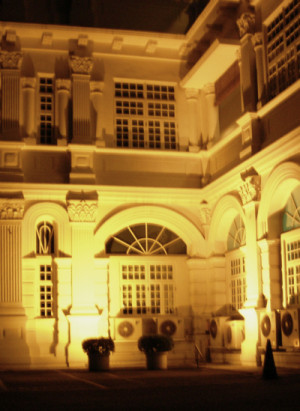 Yes, the “Villanelle” verse form relates to villas, or at least to villagers. Possibly, it derived from the work songs sung by Italian peasants as they tended crops.
Yes, the “Villanelle” verse form relates to villas, or at least to villagers. Possibly, it derived from the work songs sung by Italian peasants as they tended crops.
As a poet, why have I avoided traditional forms so long? …Arrogance, laziness, freedom, efficiency—or what? My response is: All of the above, plus a good dose of fear. To me, it seemed a violation of an emergent poem’s integrity to stuff it in a straitjacket of just so many lines, beats per line, rhyme patterns, or even a prescribed mood or theme. “Let the poem make its own choices,” I protested, considering myself more midwife than mother. Besides, following all those writing rules is hard work.
Protesting these constraints sounds odd, since so many of my poems do rhyme and do have symmetrical structures. But the way I usually achieve that is by letting a poem develop till it nears a structural balance, then tweaking it into a more refined shape. Starting with a set structure and trying to fill its mold from scratch has rarely produced a satisfying result. For example, my attempted sonnets are usually disappointing in spite of long hours of creative struggle.
Last night I made a fresh foray into poetic forms, nudged by my friend Kate. She challenged our poetry group members to write formally structured poems this month. Saturday at the library, I picked up a helpful book. Its first chapter is devoted to the villanelle. (Perhaps the best-known example is Dylan Thomas’s “Do Not Go Gentle into That Good Night.”)
Villanelle characteristics include: overall length of 16 lines; stanza length of 3 lines each, except 4 for the final one; rhyme pattern of aba, aba, …, abaa, and the repetition of lines. The first and third lines of the poem leap-frog as the final lines of the remaining stanzas. Thankfully, the villanelle allows wiggle room; there is no set line length or rhythm pattern and the repeating lines don’t have to renew verbatim each time.
Figuring that the best way to understand is to do, I wrote a villanelle that says that very thing about art in general. Here it is:
* * * 131111
ART WORK
Bringing all who love it to it
(to that soulful art within)—
the work is teaching how to do it.
Art attracts the awe that’s due it,
working its best wonders when
bringing you, who love it, to it.
Value talent and accrue it;
focus like a monk at zen—
the work will teach you how to do it.
Match its modes of flight to woo it:
bold as eagle, shy as wren,
bringing all your love into it.
Surrender to this love and through it;
share your passion. You’ll know then—
the work has taught you how to do it.
Art is life and how we view it.
With hallelujah and amen,
bringing all who love it to it,
the work keeps teaching how to do it.
* * *
For any interested fellow poets, I hope these comments will be helpful…
First, considering how much time this project would take, I decided to choose a topic I cared about. “The work will teach you how to do it,” is my favorite quotation, an Estonian proverb. Setting that idea as line 3, I developed line 1 to work with it, “Bringing all who love it to it.” Next, I inserted these lines in a blank villanelle format at each location specified by the form.
Then I realized there would be six additional lines that would have to rhyme with “do it” or “to it” and six additional lines that would have to rhyme with each other. I noticed that the alternate rhyme would appear several times before “the work… “ line, and I figured it might be handy to be able to say “when/then | the work …” or “how/now/allow | the work,” so I made up lists of rhyme partners for these word choices. The “when/then” rhymes seemed to have the most potential, so I went with that. From then on, the construction of the poem was mostly a matter of placing key words and filling in around them. (I described that last step in one sentence, but the work actually took hours before I was satisfied.) The title was an easy choice.
The next chapter in the book is “Sestina” and “Sonnet” follows soon after. But I think I will stop and rest on my “Villanelle” laurels for a while. These laurels are for success in attempting the form, rather than for mastering it. In other words, I didn’t win any poetry race with this project, but I do think I got off to a running start. And I certainly fulfilled my day’s worth of poetry passion. ♥ ~Jo
* * *
Photo Credits:
Villa entrance by miguelwhee of morguefile.com
Poem notebook by Jo Lightfoot

A long, long poem from my friend who can say so much in so few words when she’s got a mind to —— do it!